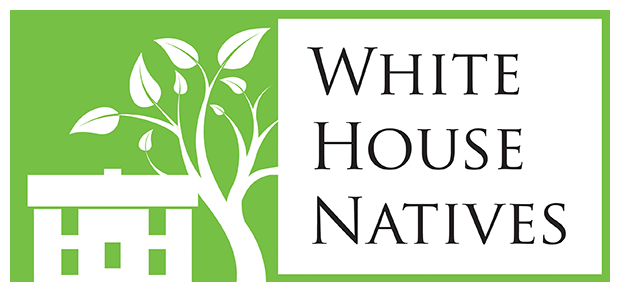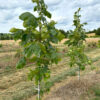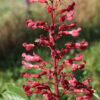A (Brief?) History of White House Natives
Like most business ventures, White House Natives began as an idea. We first started planning around 2007, but the economy took a steep decline and we shelved our ambitions. In late 2010 we blew the dust off our business plan and looked at the popularity of native trees and the lack of dedicated nurseries that grew larger size and consistent quality native trees. We felt there was an opportunity and started to lay out our first field for planting.
As with most projects, we ran into some unexpected delays before we planted the first tree; that pushed our initial planting back to early summer of 2011. Our “hillside” planting of a thousand liners comprising thirty-five species on five acre seemed extensive, but we were eager and on weekends and evenings the trees were cared for.
Our second year we moved “up the hill” to flatter ground that was previously a corn field and doubled our planting to 2,000+ trees, expanding to 65 species and adding ten acres. It became a challenge to keep up with now 3,000 trees that needed staking, pruning, tying, weeding and grass cut, but with some help from the farm and friends and family we got by until 29 June 2012 when the derecho came through and knocked over nearly every tree. With the help of a landscape crew for a week, we re-staked and cleaned up, and decided to invest in fiberglass stakes and minimize our use of the less expensive but less durable bamboo.
Our third year we tripled our planting to 3,000 trees and hit 90 different species and realized this was more than a hobby or side job. We knew we needed full time help and Eric Sours came to our rescue in the fall of 2013. Being local and having nursery, landscaping, and green house experience he fit right in and took charge.
Under Eric’s hands-on direction the nursery continued to grow and we started to plant on average 5,000 trees per year with ⅔ planted in the spring and ⅓ in early fall. We have topped out around a hundred native species; testing a few ones each year in small quantities and taking some off our list that just don’t grow well or have little demand.
Eric greatly improved all aspects of the business and especially our soil preparation (tillage, drainage, fertilization, cover crops), liner quality (touring and hand-selecting the best liners from the best growers), irrigation (close to a mile of mainline and six miles of drip annually) and maintenance regime. Most importantly, Eric saw and seized the opportunity to partner with Shen-Paco Industries, a local organization that helps give people with disabilities a chance to learn a trade and provide development and training. With the nursery having some peak-load labor needs—especially during planting season—and with seasonal maintenance, we have helped give many people a living wage and chance to be appreciated and the nursery is able to capitalize on having extra hands for timely projects.
In the spring of 2014 (our first year of sales) we sold over 400 trees up to size (2-3” caliper) and we learned about digging, hauling out, staging, and loading tractor-trailers and how the weather with too much or too little rain can drastically affect your plans. Finally, some money was going into the bank. Eric hired his first full-time helper and we really looked and felt like a nursery.
We have since continued to harvest more trees each year and now are up to digging three thousand trees annually and using about sixty acres for the nursery. We have replanted our 2012, 2013 and 2014 fields and may need some additional acreage by 2022. Eric has since expanded his team and has a tenured right-hand man and additional part time help. They are able to help Eric with the regular maintenance involved in running a nursery while learning about the business and starting a great career. Eric has just passed his ISA exam and certification and continues to look for opportunities for new customers, trees to grow, better equipment, and practices to grow a better native tree.





